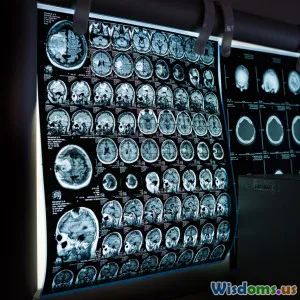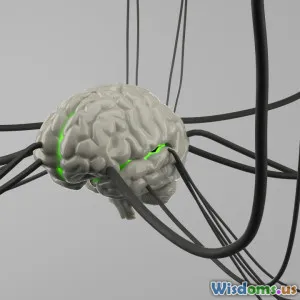
Why Do Some Memories Fade Faster Than Others
9 min read Explore why certain memories vanish quickly while others linger, revealing the science behind memory formation, forgetting, and factors influencing memory retention. (0 Reviews)
Why Do Some Memories Fade Faster Than Others?
Imagine recalling the taste of your favorite childhood dessert with vivid clarity, while you struggle to remember what you had for lunch yesterday. This common experience highlights a fundamental mystery about human memory: why do some memories fade away almost immediately, while others seem etched permanently in our minds? In this article, we unravel the science behind memory retention and forgetting, exploring the biological, psychological, and environmental factors that influence why some memories stick and others slip away.
Understanding Memory: The Basics
Before diving into why certain memories fade faster than others, it’s crucial to grasp how memory functions. At its core, memory is the process by which the brain encodes, stores, and retrieves information.
Types of Memory
Memory is not a single entity; instead, it comes in different forms:
- Sensory Memory: A very short-lived imprint of sensory information that lasts milliseconds to seconds. For example, seeing a flash of lightning before it vanishes.
- Short-Term (Working) Memory: Holds information temporarily—for example, a phone number before dialing—and lasts seconds to minutes.
- Long-Term Memory: Stores information over extended periods, potentially for a lifetime. Long-term memory subdivides into:
- Explicit Memory (conscious recall): Episodic (events) and semantic (facts).
- Implicit Memory (unconscious recall): Skills, habits.
Studies like those by Atkinson and Shiffrin (1968) model this multi-stage storage system, demonstrating how memories transition from fleeting impressions to lasting impressions.
Why Memories Fade: The Science of Forgetting
Forgetting is a natural part of memory processing, but the rate at which memories fade varies dramatically depending on many factors.
Memory Consolidation: From Fragile to Stable
Right after an experience, the memory trace is fragile. Memory consolidation is the biological process where short-term memories become stable long-term ones, occurring over hours to days. This involves:
- Synaptic Consolidation: Strengthening of connections between neurons.
- Systems Consolidation: Redistribution of memory representations from the hippocampus to the neocortex.
If consolidation is interrupted (through interference, lack of sleep, or trauma), memories may never solidify, leading to rapid fading. For instance, sleep studies show Rauchs et al. (2005) found that memories not consolidated during slow-wave sleep decay quickly.
The Role of Interference
Interference theory posits that newer memories or similar information can disrupt the retrieval of prior memories:
- Proactive Interference: Older memories hinder new learning.
- Retroactive Interference: New learning causes forgetting of older memories.
Consider trying to remember a new password after years of using an old one; the old information often makes new learning difficult. This is why memories of frequently repeated daily tasks might blend and degrade over time.
Decay Theory
Some researchers argue that memory traces simply decay biologically if not revisited or rehearsed, similar to a fading photograph. Neural pathways weaken with disuse, which partly explains why spontaneous forgetting happens.
Factors Influencing Memory Longevity
Emotional Impact and Arousal
Emotional memories tend to persist longer than neutral ones. The amygdala, a brain region pivotal for processing emotions, interacts with the hippocampus during emotionally charged events to enhance consolidation.
For example, many people vividly remember where they were during traumatic or highly joyful events—the ‘flashbulb memories’ of 9/11 or a child’s birth. Research from McGaugh (2000) highlights how stress hormones boost memory storage.
Attention and Encoding Depth
The depth of processing during memory formation significantly influences recall. Shallow processing (e.g., memorizing a list without context) leads to rapid forgetting.
Conversely, deep encoding combined with attention—for example, linking new information to existing knowledge or generating your own examples—enhances memory durability. Techniques employed by memory champions, such as the ‘method of loci’, leverage deep encoding to create lasting memories.
Rehearsal and Retrieval Practice
Repeatedly practicing retrieval strengthens memory pathways. The spacing effect reveals that spaced repetition over time is more effective than cramming in consolidating memory.
Educational psychology advocates active recall as the most efficient learning method to prevent memory fading. For instance, flashcards or self-testing help cement information far better than passive rereading.
Context and Environmental Cues
Memories tethered to rich contextual cues, such as sights, smells, or sounds relevant to the event, enhance future retrieval. Psychologist Godden and Baddeley’s classic underwater-lands study showed divers recalled words better when tested in the same context as learning (underwater vs. on land).
Real-World Implications and Examples
Alzheimer's Disease and Memory Decay
In neurodegenerative disorders like Alzheimer’s, memories fade rapidly due to neuronal death and synapse loss, particularly in memory-critical brain regions like the hippocampus and frontal cortex.
Understanding differential memory fading informs early diagnosis: recent episodic memories often disappear first, while older memories may linger longer. This progression highlights the neural underpinnings of memory loss.
Eyewitness Testimony Reliability
Since some memories degrade faster, eyewitness accounts can be notoriously unreliable. External influences, interference, and stress affect recollection accuracy. The legal field increasingly incorporates scientific understanding to evaluate testimony credibility.
Daily Life: Managing Forgetfulness
Why do you forget names but remember faces? Names require deliberate encoding and lack strong contextual hooks, making them prone to rapid fading. Strategies such as association (“John who loves fishing”) can help anchor such memories.
Insights and Strategies to Preserve Memories
Given these findings, there are effective ways to counteract rapid memory fading:
- Enhance Emotional Engagement: Connect information to personal meaning.
- Focus Attention: Minimize distractions when learning.
- Use Spaced Repetition: Review information in intervals.
- Encode Deeply: Use elaboration and imagery.
- Leverage Retrieval Practice: Self-test frequently.
- Recreate Contextual Cues: Study in environments similar to where recall happens.
Additionally, maintaining healthy sleep patterns and managing stress are essential since both critically influence memory consolidation.
Conclusion
The question of why some memories fade faster than others opens a window into the complex biological and psychological fabric of how our brains process and preserve information. Memory is shaped by consolidation dynamics, emotional salience, attention, interference, and contextual embedding. Understanding these factors equips us with the knowledge to train and protect our memories, enhancing learning and personal history preservation.
By embracing strategies grounded in neuroscience and psychology, we can turn fading memories into vivid, lasting impressions—ensuring the moments that matter endure in our minds.
References:
- Atkinson, R.C. & Shiffrin, R.M. (1968). Human memory: A proposed system and its control processes.
- McGaugh, J.L. (2000). Memory—a century of consolidation. Science.
- Rauchs, G., et al. (2005). Sleep contributes to the strengthening of some memories but not others. The Journal of Neuroscience.
- Godden, D.R., & Baddeley, A.D. (1975). Context-dependent memory in two natural environments: on land and underwater.
Rate the Post
User Reviews
Popular Posts















